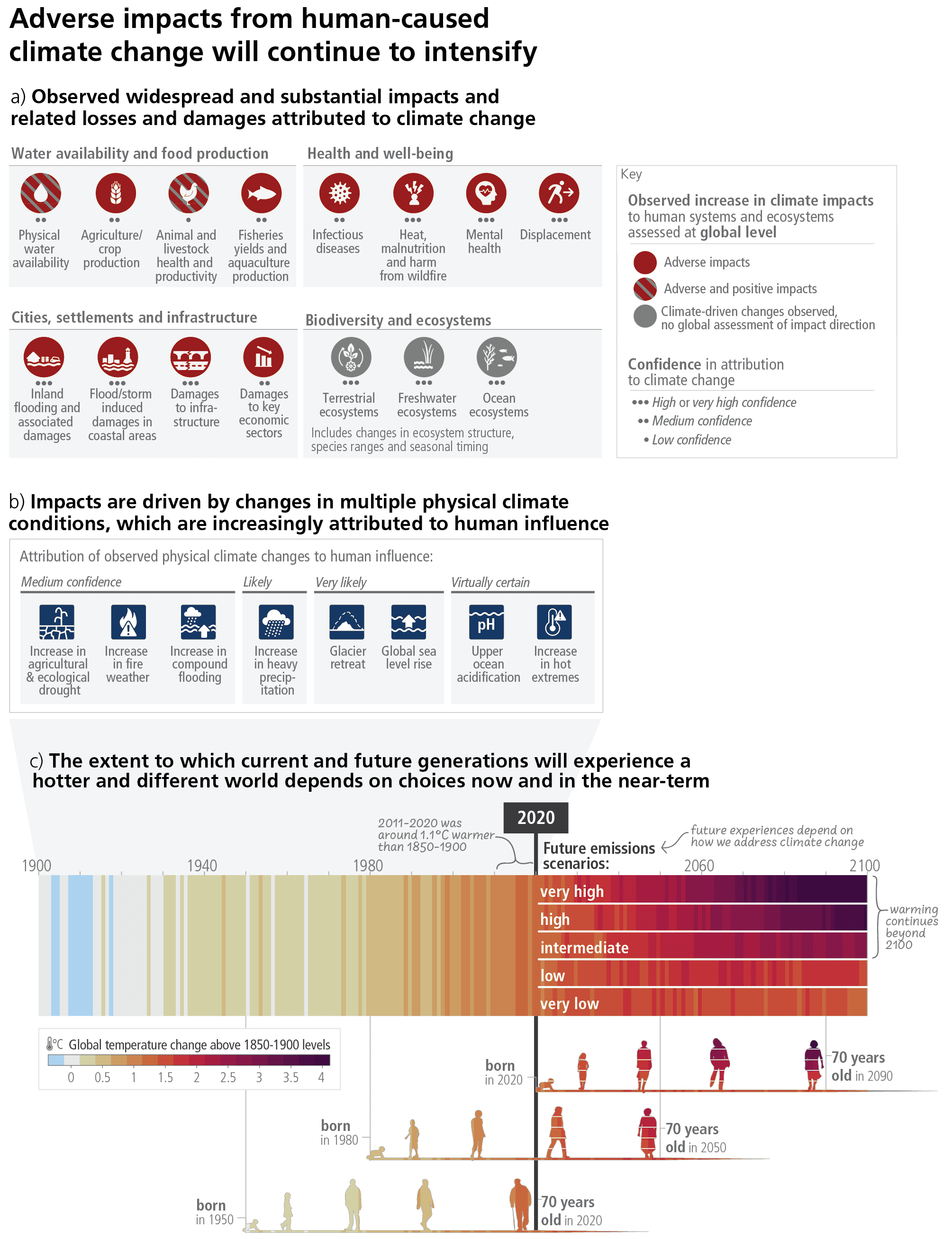Figure SPM.1
Figure SPM.1: (a) Climate change has already caused widespread impacts and related losses and damages on human systems and altered terrestrial, freshwater and ocean ecosystems worldwide. Physical water availability includes balance of water available from various sources including ground water, water quality and demand for water. Global mental health and displacement assessments reflect only assessed regions. Confidence levels reflect the assessment of attribution of the observed impact to climate change. (b) Observed impacts are connected to physical climate changes including many that have been attributed to human influence such as the selected climatic impact-drivers shown. Confidence and likelihood levels reflect the assessment of attribution of the observed climatic impact-driver to human influence. (c) Observed (1900–2020) and projected (2021–2100) changes in global surface temperature (relative to 1850–1900), which are linked to changes in climate conditions and impacts, illustrate how the climate has already changed and will change along the lifespan of three representative generations (born in 1950, 1980 and 2020). Future projections (2021–2100) of changes in global surface temperature are shown for very low (SSP1-1.9), low (SSP1-2.6), intermediate (SSP2-4.5), high (SSP3-7.0) and very high (SSP5-8.5) GHG emissions scenarios. Changes in annual global surface temperatures are presented as ‘climate stripes’, with future projections showing the human-caused long-term trends and continuing modulation by natural variability (represented here using observed levels of past natural variability). Colours on the generational icons correspond to the global surface temperature stripes for each year, with segments on future icons differentiating possible future experiences. {2.1, 2.1.2, Figure 2.1, Table 2.1, Figure 2.3, Cross-Section Box.2, 3.1, Figure 3.3, 4.1, 4.3} (Box SPM.1)
